-
Executive Summary
-
\r\n
-
Market Attractiveness Analysis 22
- Global 3D Printing Metal Market, By Material 22
- Global 3D Printing Metal Market, By Form 23
- Global 3D Printing Metal Market, By Technology 24
- Global 3D Printing Metal Market, By Application 25
-
\r\n
-
\r\n
-
\r\n
-
\r\n
-
\r\n
-
Market Introduction
-
\r\n
-
Definition 26
-
\r\n
-
Scope of the Study 26
-
\r\n
-
List of Assumptions 27
-
\r\n
-
Market Structure 27
-
\r\n
-
Key Takeaways 28
-
\r\n
-
Key Buying Criteria 28
-
\r\n
-
Market Insights
-
\r\n
-
Research Methodology
-
\r\n
-
Research Process 32
-
\r\n
-
Primary Research 33
-
\r\n
-
Secondary Research 33
-
\r\n
-
Market Size Estimation 34
-
\r\n
-
Forecast Model 35
-
\r\n
-
Market Dynamics
-
\r\n
-
Introduction 36
-
\r\n
-
Drivers 37
- Increasing Demand in the Aerospace and Automotive Industries 37
- Increasing Application in the Healthcare Industry 39
- Drivers Impact Analysis 40
-
\r\n
-
\r\n
-
\r\n
-
\r\n
-
Restraints 40
- High Material Cost 40
- Restraints Impact Analysis 41
-
\r\n
-
\r\n
-
\r\n
-
Opportunities 41
- Growth Avenues in the Manufacturing Sector 41
-
\r\n
-
\r\n
-
Challenge 41
- Quality Assurance in 3D Printing 41
-
\r\n
-
\r\n
-
Market Factor Analysis
-
\r\n
-
Supply Chain Analysis 42
- Raw Materials Suppliers 42
- 3D Printing Metal Producers 43
- Distribution Channel 43
- End-Use Industries 43
-
\r\n
-
\r\n
-
\r\n
-
\r\n
-
\r\n
-
Porter’s Five Forces Model 43
- Threat of New Entrants 44
- Intensity of Competitive Rivalry 44
- Threat of Substitutes 45
- Bargaining Power of Suppliers 45
- Bargaining Power of Buyers 45
-
\r\n
-
\r\n
-
\r\n
-
\r\n
-
\r\n
-
\r\n
-
Global 3D Printing Metal Market, by Material
-
\r\n
-
Introduction 46
-
\r\n
-
Titanium 48
-
\r\n
-
Aluminum 49
-
\r\n
-
Stainless Steel 50
-
\r\n
-
Nickel 51
-
\r\n
-
Inconel 52
-
\r\n
-
Others 53
-
\r\n
-
Global 3D Printing Metal Market, by Form
-
\r\n
-
Introduction 55
-
\r\n
-
Powder 56
-
\r\n
-
Filament 58
-
\r\n
-
Global 3D Printing Metal Market, Form by Technology
-
\r\n
-
Introduction 59
-
\r\n
-
Vat Photopolymerization 61
-
\r\n
-
Material Extrusion 62
-
\r\n
-
Sheet Lamination 63
-
\r\n
-
Binder Jetting 64
-
\r\n
-
Material Jetting 65
-
\r\n
-
Others 66
-
\r\n
-
Global 3D Printing Metal Market, by Application
-
\r\n
-
Introduction 67
-
\r\n
-
Aerospace & Defense 69
-
\r\n
-
Automotive 70
-
\r\n
-
Healthcare 71
-
\r\n
-
Building & Construction 72
-
\r\n
-
Consumer Electronics 73
-
\r\n
-
Others 74
-
\r\n
-
Global 3D Printing Metal Market, by Region
-
\r\n
-
Introduction 75
-
\r\n
-
North America 80
- US 85
- Canada 88
-
\r\n
-
\r\n
-
\r\n
-
Europe 92
- Germany 97
- UK 100
- Russia 104
- France 108
- Spain 111
- Italy 115
- Poland 118
- Belgium 122
- The Netherland 126
- Rest of Europe 130
-
\r\n
-
\r\n
-
\r\n
-
\r\n
-
\r\n
-
\r\n
-
\r\n
-
\r\n
-
\r\n
-
\r\n
-
\r\n
-
Asia-Pacific 133
- China 138
- Japan 142
- India 145
- Australia & New Zealand 149
- South Korea 152
- Thailand 156
- Indonesia 159
- Malaysia 163
- Rest of Asia Pacific 167
- Latin America 170
- Brazil 175
- Argentina 178
- Mexico 182
- Rest of Latin America 186
-
\r\n
-
\r\n
-
\r\n
-
\r\n
-
\r\n
-
\r\n
-
\r\n
-
\r\n
-
\r\n
-
\r\n
-
\r\n
-
\r\n
-
\r\n
-
\r\n
-
\r\n
-
Middle East & Africa 189
- Turkey 194
- Saudi Arabia 197
- UAE 201
- Egypt 205
- Rest of Middle East & Africa 208
-
\r\n
-
\r\n
-
\r\n
-
\r\n
-
\r\n
-
\r\n
-
Competitive Landscape
-
\r\n
-
Introduction 212
-
\r\n
-
Market Strategy Analysis 212
-
\r\n
-
Company Profiles
-
\r\n
-
Renishaw plc 214
- Company Overview 214
- Financial Overview 214
- PRODUCT OFFERINGS 215
- Key Developments 215
- SWOT Analysis 216
- Key Strategies 216
-
\r\n
-
\r\n
-
\r\n
-
\r\n
-
\r\n
-
\r\n
-
\r\n
-
voxeljet AG 217
- Company Overview 217
- Financial Overview 217
- PRODUCT OFFERINGS 218
- Key Developments 218
- SWOT Analysis 218
- Key Strategies 219
-
\r\n
-
\r\n
-
\r\n
-
\r\n
-
\r\n
-
\r\n
-
\r\n
-
3D Systems, Inc 220
- Company Overview 220
- Financial Overview 220
- PRODUCT OFFERINGS 221
- Key Developments 221
- SWOT Analysis 221
- Key Strategies 221
-
\r\n
-
\r\n
-
\r\n
-
\r\n
-
\r\n
-
\r\n
-
\r\n
-
CRS Holdings Inc (Carpenter Technology Corporation) 222
- Company Overview 222
- Financial Overview 222
- PRODUCT OFFERINGS 223
- Key Developments 223
- SWOT Analysis 223
- Key Strategies 223
-
\r\n
-
\r\n
-
\r\n
-
\r\n
-
\r\n
-
\r\n
-
\r\n
-
GKN Aerospace 224
- Company Overview 224
- Financial Overview 224
- PRODUCT OFFERINGS 225
- Key Developments 225
- SWOT Analysis 226
- Key Strategies 226
-
\r\n
-
\r\n
-
\r\n
-
\r\n
-
\r\n
-
\r\n
-
\r\n
-
EOS GmbH 227
- Company Overview 227
- Financial Overview 227
- Product Offerings 227
- Key Developments 227
- SWOT Analysis 228
- Key Strategies 228
-
\r\n
-
\r\n
-
\r\n
-
\r\n
-
\r\n
-
\r\n
-
\r\n
-
Sandvik AB 229
- Company Overview 229
- Financial Overview 229
- Product Offerings 230
- Key Developments 230
- SWOT Analysis 230
- Key Strategies 230
-
\r\n
-
\r\n
-
\r\n
-
\r\n
-
\r\n
-
\r\n
-
\r\n
-
SLM Solutions 231
- Company Overview 231
- Financial Overview 231
- Product Offerings 232
- Key Developments 232
- SWOT Analysis 232
- Key Strategies 232
-
\r\n
-
\r\n
-
\r\n
-
\r\n
-
\r\n
-
\r\n
-
\r\n
-
Materialise 233
- Company Overview 233
- Financial Overview 233
- Products Offered 234
- Key Developments 234
- SWOT Analysis 234
- Key Strategies 234
-
\r\n
-
\r\n
-
\r\n
-
\r\n
-
\r\n
-
\r\n
-
\r\n
-
Concept Laser GmbH 235
- Company Overview 235
- Financial Overview 235
- Products Offered 235
- Key Developments 235
- SWOT Analysis 236
- Key Strategies 236
-
\r\n
-
\r\n
-
\r\n
-
\r\n
-
\r\n
-
\r\n
-
\r\n
-
Optomec, Inc 237
- Company Overview 237
- Financial Overview 237
- Product Offerings 237
- Key Developments 237
- SWOT Analysis 237
- Key Strategies 238
-
\r\n
-
\r\n
-
\r\n
-
\r\n
-
\r\n
-
\r\n
-
\r\n
-
Conclusion
-
\r\n
-
Key Findings 239
-
\r\n
-
List of Tables
-
\r\n
-
MARKET SYNOPSIS 21
-
\r\n
-
LIST OF ASSUMPTIONS 27
-
\r\n
-
GLOBAL 3D PRINTING METAL MARKET, BY MATERIAL, 2023-2030 (USD MILLION) 47
-
\r\n
-
GLOBAL 3D PRINTING METAL MARKET, BY MATERIAL, 2023-2030 (TONS) 48
-
\r\n
-
TITANIUM: GLOBAL 3D PRINTING METAL MARKET, BY REGION, 2023-2030 (USD MILLION) 48
-
\r\n
-
TITANIUM: GLOBAL 3D PRINTING METAL MARKET, BY REGION, 2023-2030 (TONS) 49
-
\r\n
-
ALUMINUM: GLOBAL 3D PRINTING METAL MARKET, BY REGION, 2023-2030 (USD MILLION) 49
-
\r\n
-
ALUMINUM: GLOBAL 3D PRINTING METAL MARKET, BY REGION, 2023-2030 (TONS) 50
-
\r\n
-
STAINLESS STEEL: GLOBAL 3D PRINTING METAL MARKET, BY REGION, 2023-2030 (USD MILLION) 50
-
\r\n
-
STAINLESS STEEL: GLOBAL 3D PRINTING METAL MARKET, BY REGION, 2023-2030 (TONS) 51
-
\r\n
-
NICKEL: GLOBAL 3D PRINTING METAL MARKET, BY REGION, 2023-2030 (USD MILLION) 51
-
\r\n
-
NICKEL: GLOBAL 3D PRINTING METAL MARKET, BY REGION, 2023-2030 (TONS) 52
-
\r\n
-
INCONEL: GLOBAL 3D PRINTING METAL MARKET, BY REGION, 2023-2030 (USD MILLION) 52
-
\r\n
-
INCONEL: GLOBAL 3D PRINTING METAL MARKET, BY REGION, 2023-2030 (TONS) 53
-
\r\n
-
OTHERS: GLOBAL 3D PRINTING METAL MARKET, BY REGION, 2023-2030 (USD MILLION) 53
-
\r\n
-
OTHERS: GLOBAL 3D PRINTING METAL MARKET, BY REGION, 2023-2030 (TONS) 54
-
\r\n
-
GLOBAL 3D PRINTING METAL MARKET, BY FORM, 2023-2030 (USD MILLION) 55
-
\r\n
-
GLOBAL 3D PRINTING METAL MARKET, BY FORM, 2023-2030 (TONS) 56
-
\r\n
-
POWDER: GLOBAL 3D PRINTING METAL MARKET, BY REGION, 2023-2030 (USD MILLION) 57
-
\r\n
-
POWDER: GLOBAL 3D PRINTING METAL MARKET, BY REGION, 2023-2030 (TONS) 57
-
\r\n
-
FILAMENT: GLOBAL 3D PRINTING METAL MARKET, BY REGION, 2023-2030 (USD MILLION) 58
-
\r\n
-
FILAMENT: GLOBAL 3D PRINTING METAL MARKET, BY REGION, 2023-2030 (TONS) 58
-
\r\n
-
GLOBAL 3D PRINTING METAL MARKET, BY TECHNOLOGY, 2023-2030 (USD MILLION) 59
-
\r\n
-
GLOBAL 3D PRINTING METAL MARKET, BY TECHNOLOGY, 2023-2030 (TONS) 60
-
\r\n
-
VAT. PHOTOPOLYMERIZATION: GLOBAL 3D PRINTING METAL MARKET, BY REGION, 2023-2030 (USD MILLION) 61
-
\r\n
-
VAT. PHOTOPOLYMERIZATION: GLOBAL 3D PRINTING METAL MARKET, BY REGION, 2023-2030 (TONS) 61
-
\r\n
-
MATERIAL EXTRUSION: GLOBAL 3D PRINTING METAL MARKET, BY REGION, 2023-2030 (USD MILLION) 62
-
\r\n
-
MATERIAL EXTRUSION: GLOBAL 3D PRINTING METAL MARKET, BY REGION, 2023-2030 (TONS) 62
-
\r\n
-
SHEET LAMINATION: GLOBAL 3D PRINTING METAL MARKET, BY REGION, 2023-2030 (USD MILLION) 63
-
\r\n
-
SHEET LAMINATION: GLOBAL 3D PRINTING METAL MARKET, BY REGION, 2023-2030 (TONS) 63
-
\r\n
-
BINDER JETTING: GLOBAL 3D PRINTING METAL MARKET, BY REGION, 2023-2030 (USD MILLION) 64
-
\r\n
-
BINDER JETTING: GLOBAL 3D PRINTING METAL MARKET, BY REGION, 2023-2030 (TONS) 64
-
\r\n
-
MATERIAL JETTING: GLOBAL 3D PRINTING METAL MARKET, BY REGION, 2023-2030 (USD MILLION) 65
-
\r\n
-
MATERIAL JETTING: GLOBAL 3D PRINTING METAL MARKET, BY REGION, 2023-2030 (TONS) 65
-
\r\n
-
OTHERS: GLOBAL 3D PRINTING METAL MARKET, BY REGION, 2023-2030 (USD MILLION) 66
-
\r\n
-
OTHERS: GLOBAL 3D PRINTING METAL MARKET, BY REGION, 2023-2030 (TONS) 66
-
\r\n
-
GLOBAL 3D PRINTING METAL MARKET, BY APPLICATION, 2023-2030 (USD MILLION) 67
-
\r\n
-
GLOBAL 3D PRINTING METAL MARKET, BY APPLICATION, 2023-2030 (TONS) 68
-
\r\n
-
AEROSPACE & DEFENSE: GLOBAL 3D PRINTING METAL MARKET, BY REGION, 2023-2030 (USD MILLION) 69
-
\r\n
-
AEROSPACE & DEFENSE: GLOBAL 3D PRINTING METAL MARKET, BY REGION, 2023-2030 (TONS) 69
-
\r\n
-
AUTOMOTIVE: GLOBAL 3D PRINTING METAL MARKET, BY REGION, 2023-2030 (USD MILLION) 70
-
\r\n
-
AUTOMOTIVE: GLOBAL 3D PRINTING METAL MARKET, BY REGION, 2023-2030 (TONS) 70
-
\r\n
-
HEALTHCARE: GLOBAL 3D PRINTING METAL MARKET, BY REGION, 2023-2030 (USD MILLION) 71
-
\r\n
-
HEALTHCARE: GLOBAL 3D PRINTING METAL MARKET, BY REGION, 2023-2030 (TONS) 71
-
\r\n
-
BUILDING & CONSTRUCTION: GLOBAL 3D PRINTING METAL MARKET, BY REGION, 2023-2030 (USD MILLION) 72
-
\r\n
-
BUILDING & CONSTRUCTION: GLOBAL 3D PRINTING METAL MARKET, BY REGION, 2023-2030 (TONS) 72
-
\r\n
-
CONSUMER ELECTRONICS: GLOBAL 3D PRINTING METAL MARKET, BY REGION, 2023-2030 (USD MILLION) 73
-
\r\n
-
CONSUMER ELECTRONICS: GLOBAL 3D PRINTING METAL MARKET, BY REGION, 2023-2030 (TONS) 73
-
\r\n
-
OTHERS: GLOBAL 3D PRINTING METAL MARKET, BY REGION, 2023-2030 (USD MILLION) 74
-
\r\n
-
OTHERS: GLOBAL 3D PRINTING METAL MARKET, BY REGION, 2023-2030 (TONS) 74
-
\r\n
-
GLOBAL 3D PRINTING METAL MARKET, BY REGION, 2023-2030 (USD MILLION) 75
-
\r\n
-
GLOBAL 3D PRINTING METAL MARKET, BY REGION, 2023-2030 (TONS) 76
-
\r\n
-
GLOBAL 3D PRINTING METAL MARKET, BY MATERIAL, 2023-2030 (USD MILLION) 77
-
\r\n
-
GLOBAL 3D PRINTING METAL MARKET, BY MATERIAL, 2023-2030 (TONS) 77
-
\r\n
-
GLOBAL 3D PRINTING METAL MARKET, BY FORM, 2023-2030 (USD MILLION) 78
-
\r\n
-
GLOBAL 3D PRINTING METAL MARKET, BY FORM, 2023-2030 (TONS) 78
-
\r\n
-
GLOBAL 3D PRINTING METAL MARKET, BY APPLICATION, 2023-2030 (USD MILLION) 78
-
\r\n
-
GLOBAL 3D PRINTING METAL MARKET, BY APPLICATION, 2023-2030 (TONS) 79
-
\r\n
-
GLOBAL 3D PRINTING METAL MARKET, BY APPLICATION, 2023-2030 (USD MILLION) 79
-
\r\n
-
GLOBAL 3D PRINTING METAL MARKET, BY APPLICATION, 2023-2030 (TONS) 80
-
\r\n
-
NORTH AMERICA: 3D PRINTING METAL MARKET, BY COUNTRY, 2023-2030 (USD MILLION) 80
-
\r\n
-
NORTH AMERICA: 3D PRINTING METAL MARKET, BY COUNTRY, 2023-2030 (TONS) 81
-
\r\n
-
NORTH AMERICA: 3D PRINTING METAL MARKET, BY MATERIAL, 2023-2030 (USD MILLION) 81
-
\r\n
-
NORTH AMERICA: 3D PRINTING METAL MARKET, BY MATERIAL, 2023-2030 (TONS) 82
-
\r\n
-
NORTH AMERICA: 3D PRINTING METAL MARKET, BY FORM, 2023-2030 (USD MILLION) 82
-
\r\n
-
NORTH AMERICA: 3D PRINTING METAL MARKET, BY FORM, 2023-2030 (TONS) 82
-
\r\n
-
NORTH AMERICA: 3D PRINTING METAL MARKET, BY APPLICATION, 2023-2030 (USD MILLION) 83
-
\r\n
-
NORTH AMERICA: 3D PRINTING METAL MARKET, BY APPLICATION, 2023-2030 (TONS) 83
-
\r\n
-
NORTH AMERICA: 3D PRINTING METAL MARKET, BY APPLICATION, 2023-2030 (USD MILLION) 84
-
\r\n
-
NORTH AMERICA: 3D PRINTING METAL MARKET, BY APPLICATION, 2023-2030 (TONS) 84
-
\r\n
-
US: 3D PRINTING METAL MARKET, BY MATERIAL, 2023-2030 (USD MILLION) 85
-
\r\n
-
US: 3D PRINTING METAL MARKET, BY MATERIAL, 2023-2030 (TONS) 85
-
\r\n
-
US: 3D PRINTING METAL MARKET, BY FORM, 2023-2030 (USD MILLION) 86
-
\r\n
-
US: 3D PRINTING METAL MARKET, BY FORM, 2023-2030 (TONS) 86
-
\r\n
-
US: 3D PRINTING METAL MARKET, BY APPLICATION, 2023-2030 (TONS) 86
-
\r\n
-
US: 3D PRINTING METAL MARKET, BY APPLICATION, 2023-2030 (TONS) 87
-
\r\n
-
3D PRINTING METAL MARKET, BY APPLICATION, 2023-2030 (TONS) 87
-
\r\n
-
US: 3D PRINTING METAL MARKET, BY APPLICATION, 2023-2030 (TONS) 88
-
\r\n
-
CANADA: 3D PRINTING METAL MARKET, BY MATERIAL, 2023-2030 (USD MILLION) 88
-
\r\n
-
CANADA: 3D PRINTING METAL MARKET, BY MATERIAL, 2023-2030 (TONS) 89
-
\r\n
-
CANADA: 3D PRINTING METAL MARKET, BY FORM, 2023-2030 (USD MILLION) 89
-
\r\n
-
CANADA: 3D PRINTING METAL MARKET, BY FORM, 2023-2030 (TONS) 89
-
\r\n
-
CANADA: 3D PRINTING METAL MARKET, BY APPLICATION, 2023-2030 (USD MILLION) 90
-
\r\n
-
CANADA: 3D PRINTING METAL MARKET, BY APPLICATION, 2023-2030 (TONS) 90
-
\r\n
-
CANADA: 3D PRINTING METAL MARKET, BY APPLICATION, 2023-2030 (USD MILLION) 91
-
\r\n
-
CANADA: 3D PRINTING METAL MARKET, BY APPLICATION, 2023-2030 (TONS) 91
-
\r\n
-
EUROPE: 3D PRINTING METAL MARKET, BY COUNTRY, 2023-2030 (USD MILLION) 92
-
\r\n
-
EUROPE: 3D PRINTING METAL MARKET, BY COUNTRY, 2023-2030 (TONS) 93
-
\r\n
-
EUROPE: 3D PRINTING METAL MARKET, BY MATERIAL, 2023-2030 (USD MILLION) 93
-
\r\n
-
EUROPE: 3D PRINTING METAL MARKET, BY MATERIAL, 2023-2030 (TONS) 94
-
\r\n
-
EUROPE: 3D PRINTING METAL MARKET, BY FORM, 2023-2030 (USD MILLION) 94
-
\r\n
-
EUROPE: 3D PRINTING METAL MARKET, BY FORM, 2023-2030 (USD MILLION) 94
-
\r\n
-
EUROPE: 3D PRINTING METAL MARKET, BY APPLICATION 2023-2030 (TONS) 95
-
\r\n
-
EUROPE: 3D PRINTING METAL MARKET, BY APPLICATION, 2023-2030 (TONS) 95
-
\r\n
-
EUROPE: 3D PRINTING METAL MARKET, BY APPLICATION 2023-2030 (TONS) 96
-
\r\n
-
EUROPE: 3D PRINTING METAL MARKET, BY APPLICATION, 2023-2030 (TONS) 96
-
\r\n
-
GERMANY: 3D PRINTING METAL MARKET, BY MATERIAL, 2023-2030 (USD MILLION) 97
-
\r\n
-
GERMANY: 3D PRINTING METAL MARKET, BY MATERIAL, 2023-2030 (TONS) 97
-
\r\n
-
GERMANY: 3D PRINTING METAL MARKET, BY FORM, 2023-2030 (USD MILLION) 98
-
\r\n
-
GERMANY: 3D PRINTING METAL MARKET, BY FORM, 2023-2030 (TONS) 98
-
\r\n
-
GERMANY: 3D PRINTING METAL MARKET, BY APPLICATION, 2023-2030 (USD MILLION) 98
-
\r\n
-
GERMANY: 3D PRINTING METAL MARKET, BY APPLICATION, 2023-2030 (TONS) 99
-
\r\n
-
GERMANY: 3D PRINTING METAL MARKET, BY APPLICATION, 2023-2030 (USD MILLION) 99
-
\r\n
-
GERMANY: 3D PRINTING METAL MARKET, BY APPLICATION, 2023-2030 (TONS) 100
-
\r\n
-
UK: 3D PRINTING METAL MARKET, BY MATERIAL, 2023-2030 (USD MILLION) 100
-
\r\n
-
UK: 3D PRINTING METAL MARKET, BY MATERIAL, 2023-2030 (TONS) 101
-
\r\n
-
UK: 3D PRINTING METAL MARKET, BY FORM, 2023-2030 (USD MILLION) 101
-
\r\n
-
UK: 3D PRINTING METAL MARKET, BY FORM, 2023-2030 (TONS) 102
-
\r\n
-
UK: 3D PRINTING METAL MARKET, BY APPLICATION, 2023-2030 (USD MILLION) 102
-
\r\n
-
UK: 3D PRINTING METAL MARKET, BY APPLICATION, 2023-2030 (TONS) 103
-
\r\n
-
UK: 3D PRINTING METAL MARKET, BY APPLICATION, 2023-2030 (USD MILLION) 103
-
\r\n
-
UK: 3D PRINTING METAL MARKET, BY APPLICATION, 2023-2030 (TONS) 104
-
\r\n
-
RUSSIA: 3D PRINTING METAL MARKET, BY MATERIAL, 2023-2030 (USD MILLION) 104
-
\r\n
-
RUSSIA: 3D PRINTING METAL MARKET, BY MATERIAL, 2023-2030 (TONS) 105
-
\r\n
-
RUSSIA: 3D PRINTING METAL MARKET, BY FORM, 2023-2030 (USD MILLION) 105
-
\r\n
-
RUSSIA: 3D PRINTING METAL MARKET, BY APPLICATION, 2023-2030 (USD MILLION) 106
-
\r\n
-
3D PRINTING METAL MARKET, BY APPLICATION, 2023-2030 (TONS) 106
-
\r\n
-
3D PRINTING METAL MARKET, BY APPLICATION, 2023-2030 (USD MILLION) 107
-
\r\n
-
3D PRINTING METAL MARKET, BY APPLICATION, 2023-2030 (TONS) 107
-
\r\n
-
FRANCE: 3D PRINTING METAL MARKET, BY MATERIAL, 2023-2030 (USD MILLION) 108
-
\r\n
-
FRANCE: 3D PRINTING METAL MARKET, BY MATERIAL, 2023-2030 (TONS) 108
-
\r\n
-
FRANCE: 3D PRINTING METAL MARKET, BY FORM, 2023-2030 (USD MILLION) 109
-
\r\n
-
FRANCE: 3D PRINTING METAL MARKET, BY FORM, 2023-2030 (TONS) 109
-
\r\n
-
FRANCE: 3D PRINTING METAL MARKET, BY APPLICATION, 2023-2030 (USD MILLION) 109
-
\r\n
-
FRANCE: 3D PRINTING METAL MARKET, BY APPLICATION, 2023-2030 (TONS) 110
-
\r\n
-
3D PRINTING METAL MARKET, BY APPLICATION, 2023-2030 (USD MILLION) 110
-
\r\n
-
FRANCE: 3D PRINTING METAL MARKET, BY APPLICATION, 2023-2030 (TONS) 111
-
\r\n
-
SPAIN: 3D PRINTING METAL MARKET, BY MATERIAL, 2023-2030 (USD MILLION) 111
-
\r\n
-
SPAIN: 3D PRINTING METAL MARKET, BY MATERIAL, 2023-2030 (TONS) 112
-
\r\n
-
SPAIN: 3D PRINTING METAL MARKET, BY FORM, 2023-2030 (USD MILLION) 112
-
\r\n
-
SPAIN: 3D PRINTING METAL MARKET, BY FORM, 2023-2030 (TONS) 112
-
\r\n
-
SPAIN: 3D PRINTING METAL MARKET, BY APPLICATION, 2023-2030 (USD MILLION) 113
-
\r\n
-
SPAIN: 3D PRINTING METAL MARKET, BY APPLICATION, 2023-2030 (TONS) 113
-
\r\n
-
3D PRINTING METAL MARKET, BY APPLICATION, 2023-2030 (USD MILLION) 114
-
\r\n
-
SPAIN: 3D PRINTING METAL MARKET, BY APPLICATION, 2023-2030 (TONS) 114
-
\r\n
-
ITALY: 3D PRINTING METAL MARKET, BY MATERIAL, 2023-2030 (USD MILLION) 115
-
\r\n
-
ITALY: 3D PRINTING METAL MARKET, BY MATERIAL, 2023-2030 (TONS) 115
-
\r\n
-
ITALY: 3D PRINTING METAL MARKET, BY FORM, 2023-2030 (USD MILLION) 116
-
\r\n
-
ITALY: 3D PRINTING METAL MARKET, BY FORM, 2023-2030 (TONS) 116
-
\r\n
-
ITALY: 3D PRINTING METAL MARKET, BY APPLICATION, 2023-2030 (USD MILLION) 116
-
\r\n
-
ITALY: 3D PRINTING METAL MARKET, BY APPLICATION, 2023-2030 (TONS) 117
-
\r\n
-
: 3D PRINTING METAL MARKET, BY APPLICATION, 2023-2030 (USD MILLION) 117
-
\r\n
-
ITALY: 3D PRINTING METAL MARKET, BY APPLICATION, 2023-2030 (TONS) 118
-
\r\n
-
POLAND: 3D PRINTING METAL MARKET, BY MATERIAL, 2023-2030 (USD MILLION) 118
-
\r\n
-
POLAND: 3D PRINTING METAL MARKET, BY MATERIAL, 2023-2030 (TONS) 119
-
\r\n
-
POLAND: 3D PRINTING METAL MARKET, BY FORM, 2023-2030 (USD MILLION) 119
-
\r\n
-
POLAND: 3D PRINTING METAL MARKET, BY FORM, 2023-2030 (TONS) 120
-
\r\n
-
POLAND: 3D PRINTING METAL MARKET, BY APPLICATION, 2023-2030 (USD MILLION) 120
-
\r\n
-
POLAND: 3D PRINTING METAL MARKET, BY A APPLICATION, 2023-2030 (TONS) 121
-
\r\n
-
POLAND: 3D PRINTING METAL MARKET, BY APPLICATION, 2023-2030 (USD MILLION) 121
-
\r\n
-
POLAND: 3D PRINTING METAL MARKET, BY APPLICATION, 2023-2030 (TONS) 122
-
\r\n
-
BELGIUM: 3D PRINTING METAL MARKET, BY MATERIAL, 2023-2030 (USD MILLION) 122
-
\r\n
-
BELGIUM: 3D PRINTING METAL MARKET, BY MATERIAL, 2023-2030 (TONS) 123
-
\r\n
-
BELGIUM: 3D PRINTING METAL MARKET, BY FORM, 2023-2030 (USD MILLION) 123
-
\r\n
-
BELGIUM: 3D PRINTING METAL MARKET, BY FORM, 2023-2030 (TONS) 124
-
\r\n
-
BELGIUM: 3D PRINTING METAL MARKET, BY APPLICATION, 2023-2030 (USD MILLION) 124
-
\r\n
-
BELGIUM: 3D PRINTING METAL MARKET, BY A APPLICATION, 2023-2030 (TONS) 125
-
\r\n
-
BELGIUM: 3D PRINTING METAL MARKET, BY APPLICATION, 2023-2030 (USD MILLION) 125
-
\r\n
-
BELGIUM: 3D PRINTING METAL MARKET, BY A APPLICATION, 2023-2030 (TONS) 126
-
\r\n
-
THE NETHERLAND: 3D PRINTING METAL MARKET, BY MATERIAL, 2023-2030 (USD MILLION) 126
-
\r\n
-
THE NETHERLAND: 3D PRINTING METAL MARKET, BY MATERIAL, 2023-2030 (TONS) 127
-
\r\n
-
THE NETHERLAND: 3D PRINTING METAL MARKET, BY FORM, 2023-2030 (USD MILLION) 127
-
\r\n
-
THE NETHERLAND: 3D PRINTING METAL MARKET, BY FORM, 2023-2030 (TONS) 127
-
\r\n
-
THE NETHERLAND: 3D PRINTING METAL MARKET, BY APPLICATION, 2023-2030 (USD MILLION) 128
-
\r\n
-
THE NETHERLAND: 3D PRINTING METAL MARKET, BY A APPLICATION, 2023-2030 (TONS) 128
-
\r\n
-
THE NETHERLAND: 3D PRINTING METAL MARKET, BY A APPLICATION, 2023-2030 (TONS) 129
-
\r\n
-
THE NETHERLAND: 3D PRINTING METAL MARKET, BY MATERIAL, 2023-2030 (USD MILLION) 130
-
\r\n
-
THE NETHERLAND: 3D PRINTING METAL MARKET, BY MATERIAL, 2023-2030 (TONS) 130
-
\r\n
-
THE NETHERLAND: 3D PRINTING METAL MARKET, BY FORM, 2023-2030 (USD MILLION) 131
-
\r\n
-
THE NETHERLAND: 3D PRINTING METAL MARKET, BY FORM, 2023-2030 (TONS) 131
-
\r\n
-
THE NETHERLAND: 3D PRINTING METAL MARKET, BY APPLICATION, 2023-2030 (USD MILLION) 131
-
\r\n
-
THE NETHERLAND: 3D PRINTING METAL MARKET, BY A APPLICATION, 2023-2030 (TONS) 132
-
\r\n
-
THE NETHERLAND: 3D PRINTING METAL MARKET, BY APPLICATION, 2023-2030 (USD MILLION) 132
-
\r\n
-
THE NETHERLAND: 3D PRINTING METAL MARKET, BY A APPLICATION, 2023-2030 (TONS) 133
-
\r\n
-
ASIA-PACIFIC: 3D PRINTING METAL MARKET, BY COUNTRY, 2023-2030 (USD MILLION) 134
-
\r\n
-
ASIA-PACIFIC: 3D PRINTING METAL MARKET, BY COUNTRY, 2023-2030 (TONS) 134
-
\r\n
-
ASIA-PACIFIC: 3D PRINTING METAL MARKET, BY MATERIAL, 2023-2030 (USD MILLION) 135
-
\r\n
-
ASIA-PACIFIC:: 3D PRINTING METAL MARKET, BY MATERIAL, 2023-2030 (TONS) 135
-
\r\n
-
ASIA-PACIFIC: 3D PRINTING METAL MARKET, BY MATERIAL, 2023-2030 (USD MILLION) 136
-
\r\n
-
ASIA-PACIFIC: 3D PRINTING METAL MARKET, BY MATERIAL, 2023-2030 (TONS) 136
-
\r\n
-
ASIA-PACIFIC: 3D PRINTING METAL MARKET, BY FORM, 2023-2030 (USD MILLION) 136
-
\r\n
-
ASIA-PACIFIC: 3D PRINTING METAL MARKET, BY FORM, 2023-2030 (TONS) 137
-
\r\n
-
ASIA-PACIFIC: 3D PRINTING METAL MARKET, BY APPLICATION, 2023-2030 (USD MILLION) 137
-
\r\n
-
ASIA-PACIFIC: 3D PRINTING METAL MARKET, BY APPLICATION, 2023-2030 (TONS) 138
-
\r\n
-
CHINA: PRINTING METALS MARKET, BY MATERIAL, 2023-2030 (USD MILLION) 138
-
\r\n
-
CHINA: 3D PRINTING METAL MARKET, BY MATERIAL, 2023-2030 (TONS) 139
-
\r\n
-
CHINA: 3D PRINTING METAL MARKET, BY MATERIAL, 2023-2030 (USD MILLION) 139
-
\r\n
-
CHINA: 3D PRINTING METAL MARKET, BY MATERIAL, 2023-2030 (TONS) 139
-
\r\n
-
CHINA: 3D PRINTING METAL MARKET, BY FORM, 2023-2030 (USD MILLION) 140
-
\r\n
-
CHINA: 3D PRINTING METAL MARKET, BY FORM, 2023-2030 (TONS) 140
-
\r\n
-
CHINA: 3D PRINTING METAL MARKET, BY APPLICATION 2023-2030 (USD MILLION) 141
-
\r\n
-
CHINA: 3D PRINTING METAL MARKET, BY APPLICATION, 2023-2030 (TONS) 141
-
\r\n
-
JAPAN: PRINTING METALS MARKET, BY MATERIAL, 2023-2030 (USD MILLION) 142
-
\r\n
-
JAPAN: 3D PRINTING METAL MARKET, BY MATERIAL, 2023-2030 (TONS) 142
-
\r\n
-
JAPAN: 3D PRINTING METAL MARKET, BY MATERIAL, 2023-2030 (USD MILLION) 143
-
\r\n
-
JAPAN: 3D PRINTING METAL MARKET, BY MATERIAL, 2023-2030 (TONS) 143
-
\r\n
-
JAPAN: 3D PRINTING METAL MARKET, BY FORM, 2023-2030 (USD MILLION) 143
-
\r\n
-
JAPAN: 3D PRINTING METAL MARKET, BY FORM, 2023-2030 (TONS) 144
-
\r\n
-
JAPAN: 3D PRINTING METAL MARKET, BY APPLICATION, 2023-2030 (USD MILLION) 144
-
\r\n
-
JAPAN: 3D PRINTING METAL MARKET, BY APPLICATION, 2023-2030 (TONS) 145
-
\r\n
-
INDIA: PRINTING METALS MARKET, BY MATERIAL, 2023-2030 (USD MILLION) 145
-
\r\n
-
INDIA: 3D PRINTING METAL MARKET, BY MATERIAL, 2023-2030 (TONS) 146
-
\r\n
-
INDIA: 3D PRINTING METAL MARKET, BY MATERIAL, 2023-2030 (USD MILLION) 146
-
\r\n
-
INDIA: 3D PRINTING METAL MARKET, BY MATERIAL, 2023-2030 (TONS) 146
-
\r\n
-
INDIA: 3D PRINTING METAL MARKET, BY FORM, 2023-2030 (USD MILLION) 147
-
\r\n
-
INDIA: 3D PRINTING METAL MARKET, BY FORM, 2023-2030 (TONS) 147
-
\r\n
-
INDIA: 3D PRINTING METAL MARKET, BY APPLICATION, 2023-2030 (USD MILLION) 148
-
\r\n
-
INDIA: 3D PRINTING METAL MARKET, BY APPLICATION, 2023-2030 (TONS) 148
-
\r\n
-
AUSTRALIA & NEW ZEALAND: PRINTING METALS MARKET, BY MATERIAL, 2023-2030 (USD MILLION) 149
-
\r\n
-
AUSTRALIA & NEW ZEALAND: 3D PRINTING METAL MARKET, BY MATERIAL, 2023-2030 (TONS) 149
-
\r\n
-
AUSTRALIA & NEW ZEALAND: 3D PRINTING METAL MARKET, BY MATERIAL, 2023-2030 (USD MILLION) 150
-
\r\n
-
AUSTRALIA: 3D PRINTING METAL MARKET, BY MATERIAL, 2023-2030 (TONS) 150
-
\r\n
-
AUSTRALIA & NEW ZEALAND: 3D PRINTING METAL MARKET, BY FORM, 2023-2030 (USD MILLION) 150
-
\r\n
-
AUSTRALIA & NEW ZEALAND: 3D PRINTING METAL MARKET, BY FORM, 2023-2030 (TONS) 151
-
\r\n
-
AUSTRALIA & NEW ZEALAND: 3D PRINTING METAL MARKET, BY APPLICATION, 2023-2030 (USD MILLION) 151
-
\r\n
-
AUSTRALIA & NEW ZEALAND: 3D PRINTING METAL MARKET, BY APPLICATION, 2023-2030 (TONS) 152
-
\r\n
-
SOUTH KOREA: PRINTING METALS MARKET, BY MATERIAL, 2023-2030 (USD MILLION) 152
-
\r\n
-
SOUTH KOREA: 3D PRINTING METAL MARKET, BY MATERIAL, 2023-2030 (TONS) 153
-
\r\n
-
SOUTH KOREA: 3D PRINTING METAL MARKET, BY MATERIAL, 2023-2030 (USD MILLION) 153
-
\r\n
-
SOUTH KOREA: 3D PRINTING METAL MARKET, BY MATERIAL, 2023-2030 (TONS) 153
-
\r\n
-
SOUTH KOREA: 3D PRINTING METAL MARKET, BY FORM, 2023-2030 (USD MILLION) 154
-
\r\n
-
SOUTH KOREA: 3D PRINTING METAL MARKET, BY FORM, 2023-2030 (TONS) 154
-
\r\n
-
SOUTH KOREA: 3D PRINTING METAL MARKET, BY APPLICATION, 2023-2030 (USD MILLION) 155
-
\r\n
-
SOUTH KOREA: 3D PRINTING METAL MARKET, BY APPLICATION, 2023-2030 (TONS) 155
-
\r\n
-
THAILAND: 3DPRINTING METALS MARKET, BY MATERIAL, 2023-2030 (USD MILLION) 156
-
\r\n
-
THAILAND: 3D PRINTING METAL MARKET, BY MATERIAL, 2023-2030 (TONS) 156
-
\r\n
-
THAILAND: 3D PRINTING METAL MARKET, BY MATERIAL, 2023-2030 (USD MILLION) 157
-
\r\n
-
THAILAND: 3D PRINTING METAL MARKET, BY MATERIAL, 2023-2030 (TONS) 157
-
\r\n
-
THAILAND: 3D PRINTING METAL MARKET, BY FORM, 2023-2030 (USD MILLION) 157
-
\r\n
-
THAILAND: 3D PRINTING METAL MARKET, BY FORM, 2023-2030 (TONS) 158
-
\r\n
-
THAILAND: 3D PRINTING METAL MARKET, BY APPLICATION, 2023-2030 (USD MILLION) 158
-
\r\n
-
THAILAND: 3D PRINTING METAL MARKET, BY APPLICATION, 2023-2030 (TONS) 159
-
\r\n
-
INDONESIA: PRINTING METALS MARKET, BY MATERIAL, 2023-2030 (USD MILLION) 159
-
\r\n
-
INDONESIA: 3D PRINTING METAL MARKET, BY MATERIAL, 2023-2030 (TONS) 160
-
\r\n
-
INDONESIA: 3D PRINTING METAL MARKET, BY MATERIAL, 2023-2030 (USD MILLION) 160
-
\r\n
-
INDONESIA: 3D PRINTING METAL MARKET, BY MATERIAL, 2023-2030 (TONS) 161
-
\r\n
-
INDONESIA: 3D PRINTING METAL MARKET, BY FORM, 2023-2030 (USD MILLION) 161
-
\r\n
-
INDONESIA: 3D PRINTING METAL MARKET, BY FORM, 2023-2030 (TONS) 162
-
\r\n
-
INDONESIA: 3D PRINTING METAL MARKET, BY APPLICATION, 2023-2030 (USD MILLION) 162
-
\r\n
-
INDONESIA: 3D PRINTING METAL MARKET, BY APPLICATION, 2023-2030 (TONS) 163
-
\r\n
-
MALAYSIA: 3D PRINTING METAL MARKET, BY MATERIAL, 2023-2030 (USD MILLION) 163
-
\r\n
-
MALAYSIA: 3D PRINTING METAL MARKET, BY MATERIAL, 2023-2030 (TONS) 164
-
\r\n
-
MALAYSIA: 3D PRINTING METAL MARKET, BY MATERIAL, 2023-2030 (USD MILLION) 164
-
\r\n
-
MALAYSIA: 3D PRINTING METAL MARKET, BY MATERIAL, 2023-2030 (TONS) 164
-
\r\n
-
MALAYSIA: 3D PRINTING METAL MARKET, BY FORM, 2023-2030 (USD MILLION) 165
-
\r\n
-
MALAYSIA: 3D PRINTING METAL MARKET, BY FORM, 2023-2030 (TONS) 165
-
\r\n
-
MALAYSIA: 3D PRINTING METAL MARKET, BY FORM, 2023-2030 (USD MILLION) 166
-
\r\n
-
MALAYSIA: 3D PRINTING METAL MARKET, BY FORM, 2023-2030 (TONS) 166
-
\r\n
-
REST OF ASIA PACIFIC: 3D PRINTING METAL MARKET, BY MATERIAL, 2023-2030 (USD MILLION) 167
-
\r\n
-
REST OF ASIA PACIFIC: 3D PRINTING METAL MARKET, BY MATERIAL, 2023-2030 (TONS) 167
-
\r\n
-
REST OF ASIA-PACIFIC: 3D PRINTING METAL MARKET, BY MATERIAL, 2023-2030 (USD MILLION) 168
-
\r\n
-
REST OF ASIA-PACIFIC: 3D PRINTING METAL MARKET, BY MATERIAL, 2023-2030 (TONS) 168
-
\r\n
-
REST OF ASIA-PACIFIC: 3D PRINTING METAL MARKET, BY FORM, 2023-2030 (USD MILLION) 168
-
\r\n
-
REST OF ASIA-PACIFIC: 3D PRINTING METAL MARKET, BY FORM, 2023-2030 (TONS) 169
-
\r\n
-
REST OF ASIA-PACIFIC: 3D PRINTING METAL MARKET, BY APPLICATION, 2023-2030 (USD MILLION) 169
-
\r\n
-
REST OF ASIA-PACIFIC: 3D PRINTING METAL MARKET, BY APPLICATION, 2023-2030 (TONS) 170
-
\r\n
-
LATIN AMERICA: 3D PRINTING METAL MARKET, BY COUNTRY, 2023-2030 (USD MILLION) 170
-
\r\n
-
LATIN AMERICA: 3D PRINTING METAL MARKET, BY COUNTRY, 2023-2030 (TONS) 171
-
\r\n
-
LATIN AMERIUCA: PRINTING METALS MARKET, BY MATERIAL, 2023-2030 (USD MILLION) 171
-
\r\n
-
LATIN AMERIUCA: 3D PRINTING METAL MARKET, BY MATERIAL, 2023-2030 (TONS) 172
-
\r\n
-
LATIN AMERICA: 3D PRINTING METAL MARKET, BY MATERIAL, 2023-2030 (USD MILLION) 172
-
\r\n
-
LATIN AMERICA: 3D PRINTING METAL MARKET, BY MATERIAL, 2023-2030 (TONS) 172
-
\r\n
-
LATIN AMERICA: 3D PRINTING METAL MARKET, BY FORM, 2023-2030 (USD MILLION) 173
-
\r\n
-
LATIN AMERICA: 3D PRINTING METAL MARKET, BY FORM, 2023-2030 (TONS) 173
-
\r\n
-
LATIN AMERICA: 3D PRINTING METAL MARKET, BY APPLICATION, 2023-2030 (USD MILLION) 174
-
\r\n
-
LATIN AMERICA: 3D PRINTING METAL MARKET, BY APPLICATION, 2023-2030 (TONS) 174
-
\r\n
-
PRINTING METALS MARKET, BY MATERIAL, 2023-2030 (USD MILLION) 175
-
\r\n
-
LATIN AMERIUCA: 3D PRINTING METAL MARKET, BY MATERIAL, 2023-2030 (TONS) 175
-
\r\n
-
BRAZIL: 3D PRINTING METAL MARKET, BY MATERIAL, 2023-2030 (USD MILLION) 176
-
\r\n
-
BRAZIL: 3D PRINTING METAL MARKET, BY MATERIAL, 2023-2030 (TONS) 176
-
\r\n
-
BRAZIL: 3D PRINTING METAL MARKET, BY FORM, 2023-2030 (USD MILLION) 176
-
\r\n
-
BRAZIL: 3D PRINTING METAL MARKET, BY FORM, 2023-2030 (TONS) 177
-
\r\n
-
BRAZIL: 3D PRINTING METAL MARKET, BY APPLICATION, 2023-2030 (USD MILLION) 177
-
\r\n
-
BRAZIL: 3D PRINTING METAL MARKET, BY APPLICATION, 2023-2030 (TONS) 178
-
\r\n
-
ARGENTINA: 3D PRINTING METAL MARKET, BY MATERIAL, 2023-2030 (USD MILLION) 178
-
\r\n
-
ARGENTINA: 3D PRINTING METAL MARKET, BY MATERIAL, 2023-2030 (TONS) 179
-
\r\n
-
ARGENTINA: 3D PRINTING METAL MARKET, BY MATERIAL, 2023-2030 (USD MILLION) 179
-
\r\n
-
ARGENTINA: 3D PRINTING METAL MARKET, BY MATERIAL, 2023-2030 (TONS) 180
-
\r\n
-
ARGENTINA: 3D PRINTING METAL MARKET, BY FORM, 2023-2030 (USD MILLION) 180
-
\r\n
-
ARGENTINA: 3D PRINTING METAL MARKET, BY FORM, 2023-2030 (TONS) 181
-
\r\n
-
ARGENTINA: 3D PRINTING METAL MARKET, BY APPLICATION, 2023-2030 (USD MILLION) 181
-
\r\n
-
ARGENTINA: 3D PRINTING METAL MARKET, BY APPLICATION, 2023-2030 (TONS) 182
-
\r\n
-
MEXICO: 3D PRINTING METAL MARKET, BY MATERIAL, 2023-2030 (USD MILLION) 182
-
\r\n
-
MEXICO: 3D PRINTING METAL MARKET, BY MATERIAL, 2023-2030 (TONS) 183
-
\r\n
-
MEXICO: 3D PRINTING METAL MARKET, BY MATERIAL, 2023-2030 (USD MILLION) 183
-
\r\n
-
MEXICO: 3D PRINTING METAL MARKET, BY MATERIAL, 2023-2030 (TONS) 183
-
\r\n
-
MEXICO: 3D PRINTING METAL MARKET, BY FORM, 2023-2030 (USD MILLION) 184
-
\r\n
-
MEXICO: 3D PRINTING METAL MARKET, BY FORM, 2023-2030 (TONS) 184
-
\r\n
-
MEXICO: 3D PRINTING METAL MARKET, BY APPLICATION 2023-2030 (USD MILLION) 185
-
\r\n
-
MEXICO: 3D PRINTING METAL MARKET, BY APPLICATION, 2023-2030 (TONS) 185
-
\r\n
-
REST OF LATIN AMERICA: 3D PRINTING METAL MARKET, BY MATERIAL, 2023-2030 (USD MILLION) 186
-
\r\n
-
REST OF LATIN AMERICA: 3D PRINTING METAL MARKET, BY MATERIAL, 2023-2030 (TONS) 186
-
\r\n
-
REST OF LATIN AMERICA: 3D PRINTING METAL MARKET, BY MATERIAL, 2023-2030 (USD MILLION) 187
-
\r\n
-
REST OF LATIN AMERICA: 3D PRINTING METAL MARKET, BY MATERIAL, 2023-2030 (TONS) 187
-
\r\n
-
REST OF LATIN AMERICA: 3D PRINTING METAL MARKET, BY FORM, 2023-2030 (USD MILLION) 187
-
\r\n
-
REST OF LATIN AMERICA: 3D PRINTING METAL MARKET, BY FORM, 2023-2030 (TONS) 188
-
\r\n
-
REST OF LATIN AMERICA: 3D PRINTING METAL MARKET, BY APPLICATION, 2023-2030 (USD MILLION) 188
-
\r\n
-
REST OF LATIN AMERICA: 3D PRINTING METAL MARKET, BY APPLICATION, 2023-2030 (TONS) 189
-
\r\n
-
MIDDLE EAST & AFRICA: 3D PRINTING METAL MARKET, BY COUNTRY, 2023-2030 (USD MILLION) 189
-
\r\n
-
MIDDLE EAST & AFRICA: 3D PRINTING METAL MARKET, BY COUNTRY, 2023-2030 (TONS) 190
-
\r\n
-
MIDDLE EAST & AFRICA: 3D PRINTING METAL MARKET, BY MATERIAL, 2023-2030 (USD MILLION) 190
-
\r\n
-
MIDDLE EAST & AFRICA: 3D PRINTING METAL MARKET, BY MATERIAL, 2023-2030 (TONS) 191
-
\r\n
-
MIDDLE EAST & AFRICA: 3D PRINTING METAL MARKET, BY MATERIAL, 2023-2030 (USD MILLION) 191
-
\r\n
-
MIDDLE EAST & AFRICA: 3D PRINTING METAL MARKET, BY MATERIAL, 2023-2030 (TONS) 191
-
\r\n
-
MIDDLE EAST & AFRICA: 3D PRINTING METAL MARKET, BY FORM, 2023-2030 (USD MILLION) 192
-
\r\n
-
MIDDLE EAST & AFRICA: 3D PRINTING METAL MARKET, BY APPLICATION, 2023-2030 (USD MILLION) 192
-
\r\n
-
MIDDLE EAST & AFRICA: 3D PRINTING METAL MARKET, BY APPLICATION, 2023-2030 (TONS) 193
-
\r\n
-
MIDDLE EAST & AFRICA: 3D PRINTING METAL MARKET, BY FORM, 2023-2030 (TONS) 193
-
\r\n
-
TURKEY: 3D PRINTING METAL MARKET, BY MATERIAL, 2023-2030 (USD MILLION) 194
-
\r\n
-
TURKEY: 3D PRINTING METAL MARKET, BY MATERIAL, 2023-2030 (TONS) 194
-
\r\n
-
TURKEY: 3D PRINTING METAL MARKET, BY MATERIAL, 2023-2030 (USD MILLION) 195
-
\r\n
-
TURKEY: 3D PRINTING METAL MARKET, BY MATERIAL, 2023-2030 (TONS) 195
-
\r\n
-
TURKEY: 3D PRINTING METAL MARKET, BY FORM, 2023-2030 (USD MILLION) 195
-
\r\n
-
TURKEY: 3D PRINTING METAL MARKET, BY FORM, 2023-2030 (TONS) 196
-
\r\n
-
TURKEY: 3D PRINTING METAL MARKET, BY APPLICATION, 2023-2030 (USD MILLION) 196
-
\r\n
-
TURKEY: 3D PRINTING METAL MARKET, BY APPLICATION, 2023-2030 (TONS) 197
-
\r\n
-
SAUDI ARABIA: 3D PRINTING METAL MARKET, BY MATERIAL, 2023-2030 (USD MILLION) 197
-
\r\n
-
SAUDI ARABIA: 3D PRINTING METAL MARKET, BY MATERIAL, 2023-2030 (TONS) 198
-
\r\n
-
SAUDI ARABIA: 3D PRINTING METAL MARKET, BY MATERIAL, 2023-2030 (USD MILLION) 198
-
\r\n
-
SAUDI ARABIA: 3D PRINTING METAL MARKET, BY MATERIAL, 2023-2030 (TONS) 199
-
\r\n
-
SAUDI ARABIA: 3D PRINTING METAL MARKET, BY FORM, 2023-2030 (USD MILLION) 199
-
\r\n
-
SAUDI ARABIA: 3D PRINTING METAL MARKET, BY FORM, 2023-2030 (TONS) 200
-
\r\n
-
SAUDI ARABIA: 3D PRINTING METAL MARKET, BY APPLICATION, 2023-2030 (USD MILLION) 200
-
\r\n
-
SAUDI ARABIA: 3D PRINTING METAL MARKET, BY APPLICATION, 2023-2030 (TONS) 201
-
\r\n
-
UAE: 3D PRINTING METAL MARKET, BY MATERIAL, 2023-2030 (USD MILLION) 201
-
\r\n
-
UAE: 3D PRINTING METAL MARKET, BY MATERIAL, 2023-2030 (TONS) 202
-
\r\n
-
UAE 3D PRINTING METAL MARKET, BY MATERIAL, 2023-2030 (USD MILLION) 202
-
\r\n
-
UAE : 3D PRINTING METAL MARKET, BY MATERIAL, 2023-2030 (TONS) 202
-
\r\n
-
UAE: 3D PRINTING METAL MARKET, BY FORM, 2023-2030 (USD MILLION) 202
-
\r\n
-
UAE: 3D PRINTING METAL MARKET, BY APPLICATION, 2023-2030 (TONS) 203
-
\r\n
-
UAE: 3D PRINTING METAL MARKET, BY APPLICATION, 2023-2030 (USD MILLION) 204
-
\r\n
-
UAE: 3D PRINTING METAL MARKET, BY FORM, 2023-2030 (TONS) 204
-
\r\n
-
EGYPT: 3D PRINTING METAL MARKET, BY MATERIAL, 2023-2030 (USD MILLION) 205
-
\r\n
-
EGYPT: 3D PRINTING METAL MARKET, BY MATERIAL, 2023-2030 (TONS) 205
-
\r\n
-
EGYPT: 3D PRINTING METAL MARKET, BY MATERIAL, 2023-2030 (USD MILLION) 206
-
\r\n
-
EGYPT: 3D PRINTING METAL MARKET, BY MATERIAL, 2023-2030 (TONS) 206
-
\r\n
-
EGYPT: 3D PRINTING METAL MARKET, BY FORM, 2023-2030 (USD MILLION) 206
-
\r\n
-
EGYPT: 3D PRINTING METAL MARKET, BY FORM, 2023-2030 (TONS) 207
-
\r\n
-
EGYPT: 3D PRINTING METAL MARKET, BY APPLICATION, 2023-2030 (USD MILLION) 207
-
\r\n
-
EGYPT: 3D PRINTING METAL MARKET, BY APPLICATION, 2023-2030 (TONS) 208
-
\r\n
-
REST OF MIDDLE EAST & AFRICA: 3D PRINTING METAL MARKET, BY MATERIAL, 2023-2030 (USD MILLION) 208
-
\r\n
-
REST OF MIDDLE EAST & AFRICA: 3D PRINTING METAL MARKET, BY MATERIAL, 2023-2030 (TONS) 209
-
\r\n
-
REST OF MIDDLE EAST & AFRICA: 3D PRINTING METAL MARKET, BY MATERIAL, 2023-2030 (USD MILLION) 209
-
\r\n
-
REST OF MIDDLE EAST & AFRICA: 3D PRINTING METAL MARKET, BY MATERIAL, 2023-2030 (TONS) 209
-
\r\n
-
REST OF MIDDLE EAST & AFRICA: 3D PRINTING METAL MARKET, BY FORM, 2023-2030 (USD MILLION) 210
-
\r\n
-
REST OF MIDDLE EAST & AFRICA: 3D PRINTING METAL MARKET, BY FORM, 2023-2030 (TONS) 210
-
\r\n
-
REST OF MIDDLE EAST & AFRICA: 3D PRINTING METAL MARKET, BY APPLICATION, 2023-2030 (USD MILLION) 211
-
\r\n
-
REST OF MIDDLE EAST & AFRICA: 3D PRINTING METAL MARKET, BY APPLICATION, 2023-2030 (TONS) 211
-
\r\n
-
TABLE 1 KEY DEVELOPMENTS OVERVIEW 213
-
\r\n
-
RENISHAW PLC: PRODUCT OFFERINGS 215
-
\r\n
-
RENISHAW PLC: KEY DEVELOPMENT 215
-
\r\n
-
VOXELJET AG: PRODUCT OFFERINGS 218
-
\r\n
-
VOXELJET AG: KEY DEVELOPMENT 218
-
\r\n
-
3D SYSTEMS, INC: PRODUCT OFFERINGS 221
-
\r\n
-
CRS HOLDINGS INC: PRODUCT OFFERINGS 223
-
\r\n
-
CRS HOLDINGS INC: KEY DEVELOPMENT 223
-
\r\n
-
GKN AEROSPACE: PRODUCT OFFERINGS 225
-
\r\n
-
GKN AEROSPACE: KEY DEVELOPMENT 225
-
\r\n
-
EOS GMBH: PRODUCT OFFERINGS 227
-
\r\n
-
EOS GMBH:KEY DEVELOPMENT 227
-
\r\n
-
SANDVIK AB.: PRODUCT OFFERINGS 230
-
\r\n
-
SANDVIK AB.: KEY DEVELOPMENT 230
-
\r\n
-
SLM SOLUTIONS: PRODUCT OFFERINGS 232
-
\r\n
-
SLM SOLUTIONS.: KEY DEVELOPMENT 232
-
\r\n
-
MATERIALISE: PRODUCT OFFERINGS 234
-
\r\n
-
MATERIALISE.: KEY DEVELOPMENT 234
-
\r\n
-
CONCEPT LASER GMBH: PRODUCT OFFERINGS 235
-
\r\n
-
CONCEPT LASER GMBH.: KEY DEVELOPMENT 235
-
\r\n
-
OPTOMEC, INC.: PRODUCT OFFERINGS 237
-
\r\n
-
List of Figures
-
\r\n
-
MARKET ATTRACTIVENESS ANALYSIS: GLOBAL 3D PRINTING METAL MARKET 22
-
\r\n
-
GLOBAL 3D PRINTING METAL MARKET ANALYSIS BY MATERIAL 22
-
\r\n
-
GLOBAL 3D PRINTING METAL MARKET ANALYSIS BY FORM 23
-
\r\n
-
GLOBAL 3D PRINTING METAL MARKET ANALYSIS BY TECHNOLOGY 24
-
\r\n
-
GLOBAL 3D PRINTING METAL MARKET ANALYSIS BY APPLICATION 25
-
\r\n
-
GLOBAL 3D PRINTING METAL MARKET: MARKET STRUCTURE 27
-
\r\n
-
KEY TAKEAWAYS OF THE GLOBAL 3D PRINTING METAL MARKET 28
-
\r\n
-
KEY BUYING CRITERIA OF THE GLOBAL 3D PRINTING METAL MARKET 28
-
\r\n
-
NORTH AMERICA: MARKET SIZE AND MARKET SHARE, BY COUNTRY (2023-2030) 29
-
\r\n
-
EUROPE: MARKET SIZE AND MARKET SHARE, BY COUNTRY (2023-2030) 30
-
\r\n
-
ASIA-PACIFIC: MARKET SIZE AND MARKET SHARE, BY COUNTRY (2023-2030) 30
-
\r\n
-
LATIN AMERICA: MARKET SIZE AND MARKET SHARE, BY COUNTRY (2023-2030) 31
-
\r\n
-
MIDDLE EAST & AFRICA: MARKET SIZE AND MARKET SHARE, BY COUNTRY (2023-2030) 31
-
\r\n
-
RESEARCH PROCESS OF MRFR 32
-
\r\n
-
TOP-DOWN & BOTTOM-UP APPROACHES 35
-
\r\n
-
ANALYSIS OF GLOBAL 3D PRINTING METAL MARKET 36
-
\r\n
-
REVENUE TURNOVER OF THE AEROSPACE INDUSTRY IN USD BILLION (2023) 37
-
\r\n
-
CANADA AIRCRAFT PRODUCTION (2023-2030) 38
-
\r\n
-
CAR PRODUCTION (2023-2030) 38
-
\r\n
-
INCREASING EXPENDITURE IN HEALTHCARE INDUSTRY (2023-2030) 39
-
\r\n
-
DRIVERS IMPACT ANALYSIS: EUROPE SODIUM CHLORITE MARKET 40
-
\r\n
-
RESTRAINTS IMPACT ANALYSIS: EUROPE SODIUM CHLORITE MARKET 41
-
\r\n
-
SUPPLY CHAIN ANALYSIS 42
-
\r\n
-
PORTER'S FIVE FORCES ANALYSIS OF THE GLOBAL 3D PRINTING METAL MARKET 44
-
\r\n
-
GLOBAL 3D PRINTING METAL MARKET, BY MATERIAL, 2023-2030 (USD MILLION) 46
-
\r\n
-
GLOBAL 3D PRINTING METAL MARKET, BY MATERIAL, 2023-2030 (TONS) 47
-
\r\n
-
GLOBAL 3D PRINTING METAL MARKET, BY FORM, 2023-2030 (USD MILLION) 55
-
\r\n
-
GLOBAL 3D PRINTING METAL MARKET, BY FORM, 2023-2030 (TONS) 56
-
\r\n
-
GLOBAL 3D PRINTING METAL MARKET, BY TECHNOLOGY, 2023-2030 (USD MILLION) 59
-
\r\n
-
GLOBAL 3D PRINTING METAL MARKET, BY FORM, 2023-2030 (TONS) 60
-
\r\n
-
GLOBAL 3D PRINTING METAL MARKET, BY APPLICATION, 2023-2030 (USD MILLION) 67
-
\r\n
-
GLOBAL 3D PRINTING METAL MARKET, BY APPLICATION, 2023-2030 (TONS) 68
-
\r\n
-
GLOBAL 3D PRINTING METAL MARKET, BY REGION, 2023-2030 (USD MILLION) 75
-
\r\n
-
GLOBAL 3D PRINTING METAL MARKET, BY REGION, 2023-2030 (TONS) 76
-
\r\n
-
MARKET STRATEGY SHARE (%) 212
-
\r\n
-
RENISHAW PLC: FINANCIAL OVERVIEW SNAPSHOT 214
-
\r\n
-
RENISHAW PLC: SWOT ANALYSIS 216
-
\r\n
-
VOXELJET AG: FINANCIAL OVERVIEW SNAPSHOT 217
-
\r\n
-
VOXELJET AG: SWOT ANALYSIS 218
-
\r\n
-
3D SYSTEMS, INC: FINANCIAL OVERVIEW SNAPSHOT 220
-
\r\n
-
3D SYSTEMS, INC: SWOT ANALYSIS 221
-
\r\n
-
CRS HOLDINGS INC: FINANCIAL OVERVIEW SNAPSHOT 222
-
\r\n
-
CRS HOLDINGS INC: SWOT ANALYSIS 223
-
\r\n
-
GKN AEROSPACE: FINANCIAL OVERVIEW SNAPSHOT 224
-
\r\n
-
GKN AEROSPACE: SWOT ANALYSIS 226
-
\r\n
-
EOS GMBH: SWOT ANALYSIS 228
-
\r\n
-
SANDVIK AB: FINANCIAL OVERVIEW SNAPSHOT 229
-
\r\n
-
SANDVIK AB: SWOT ANALYSIS 230
-
\r\n
-
SLM SOLUTIONS: FINANCIAL OVERVIEW SNAPSHOT 231
-
\r\n
-
SLM SOLUTIONS: SWOT ANALYSIS 232
-
\r\n
-
MATERIALISE: FINANCIAL OVERVIEW SNAPSHOT 233
-
\r\n
-
MATERIALISE: SWOT ANALYSIS 234
-
\r\n
-
CONCEPT LASER GMBH: SWOT ANALYSIS 236
-
\r\n
-
OPTOMEC, INC.: SWOT ANALYSIS 237

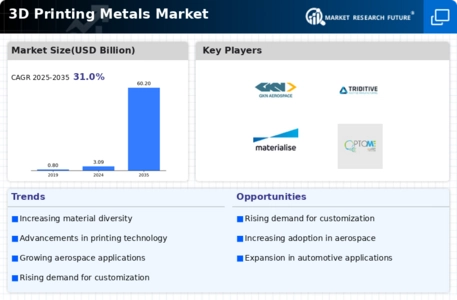

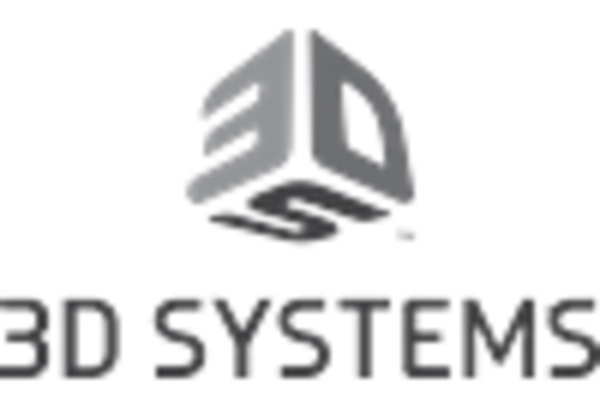
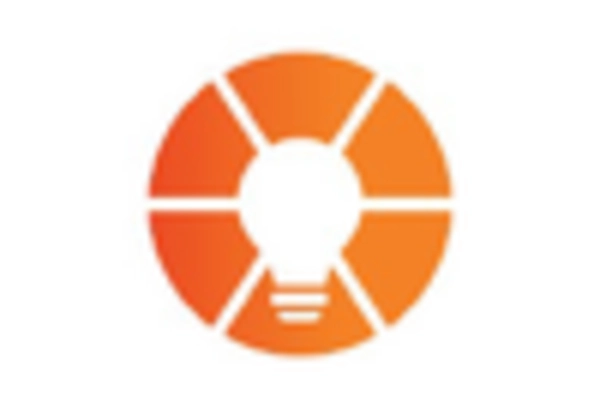
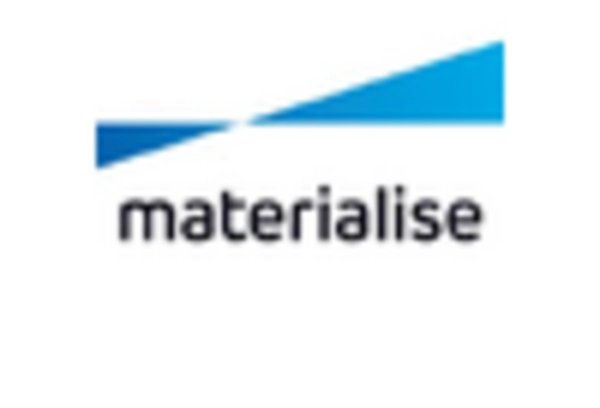
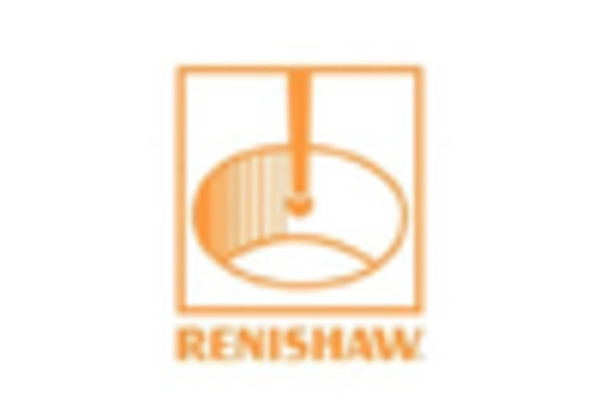
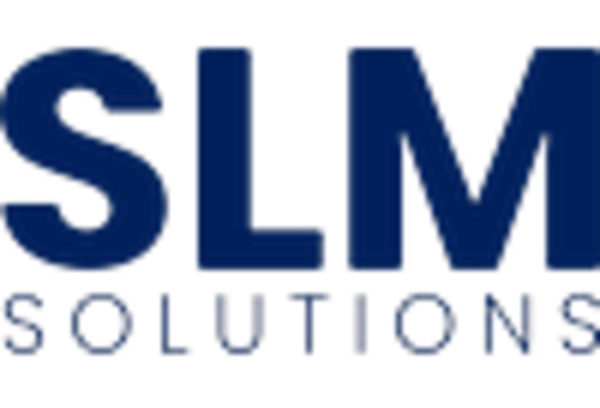
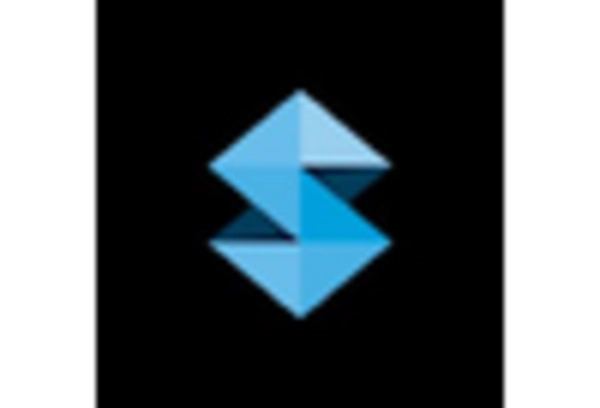

Leave a Comment